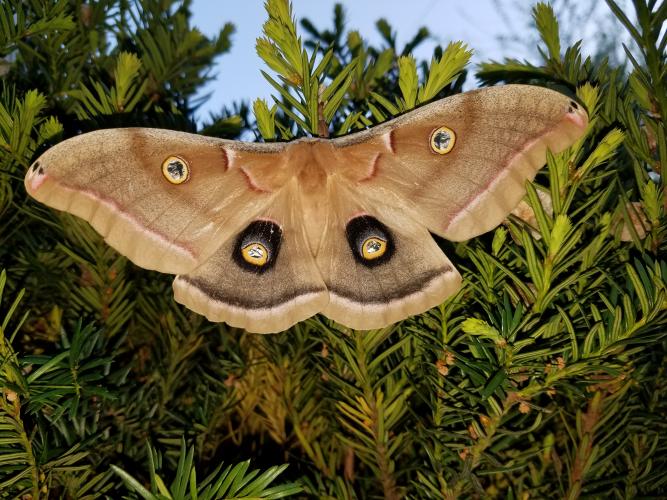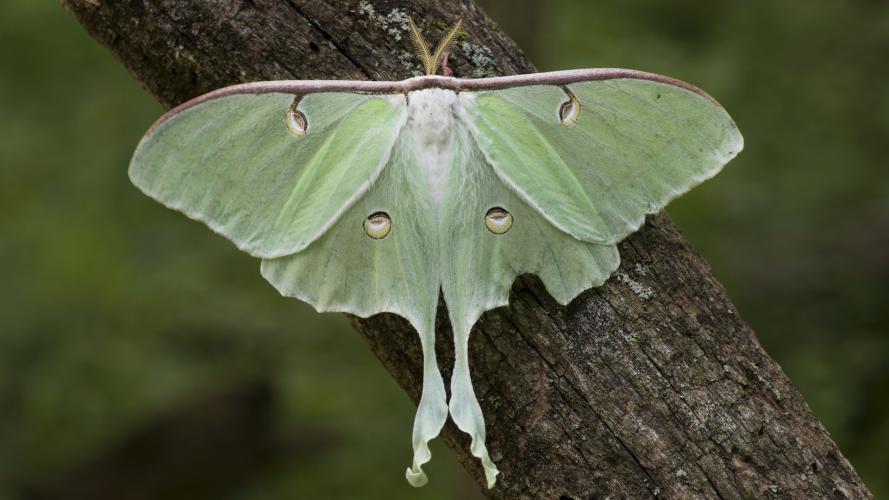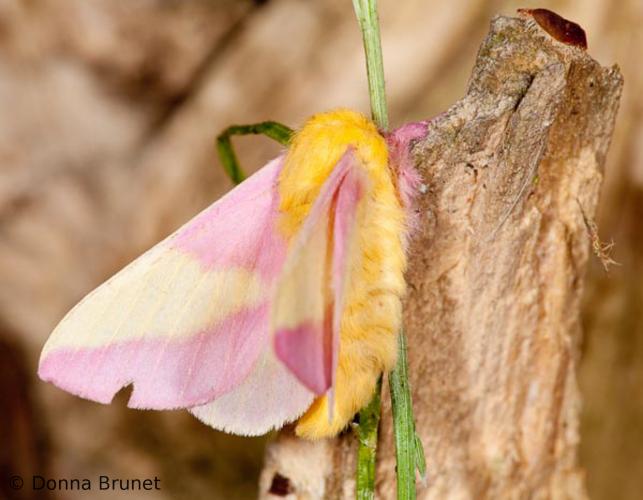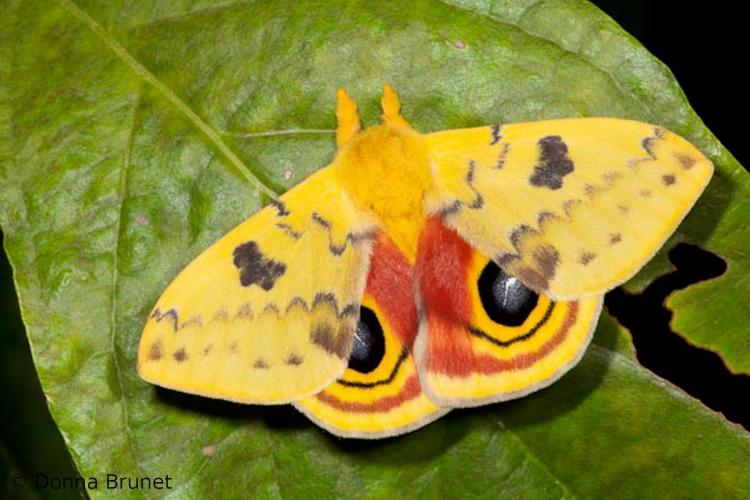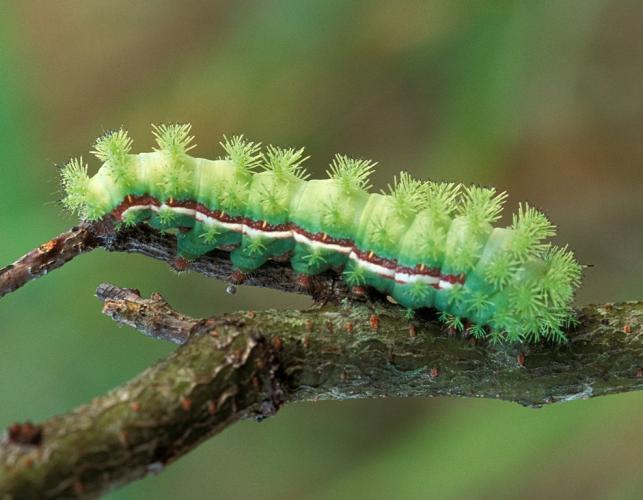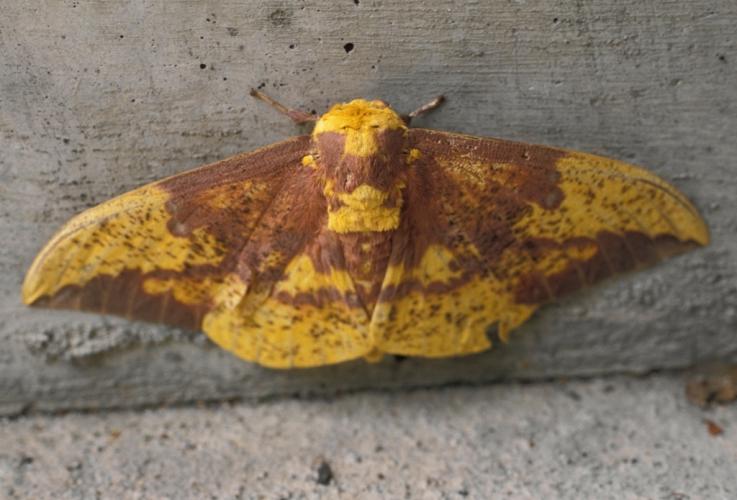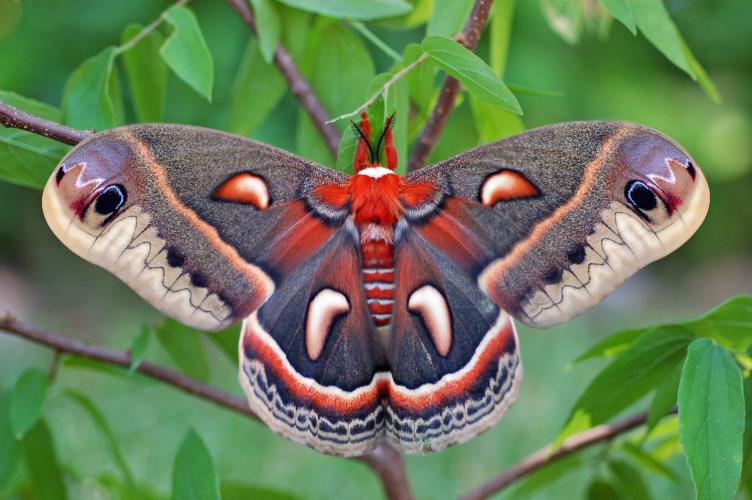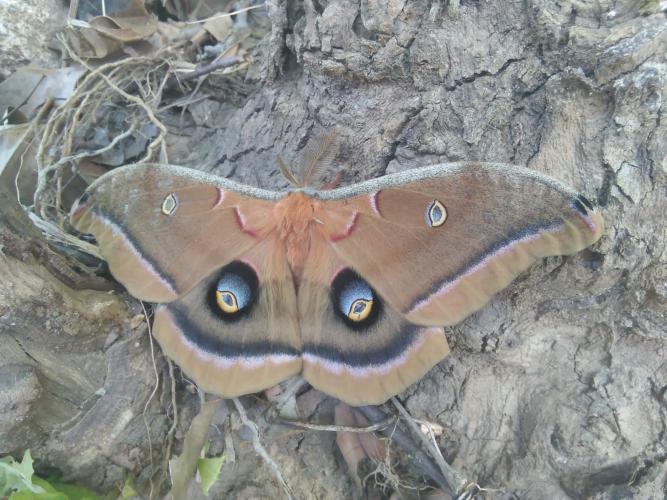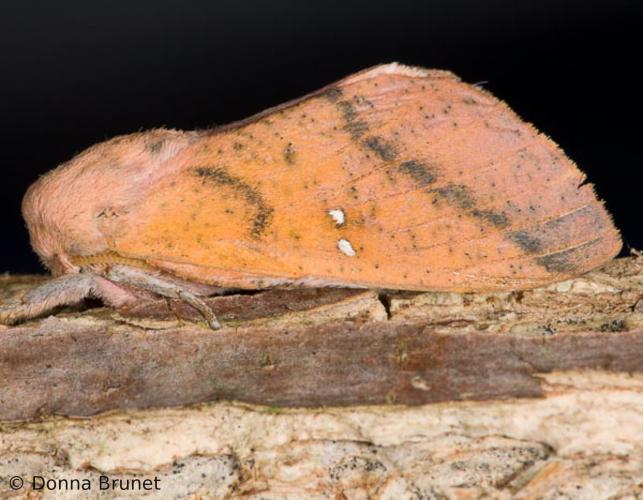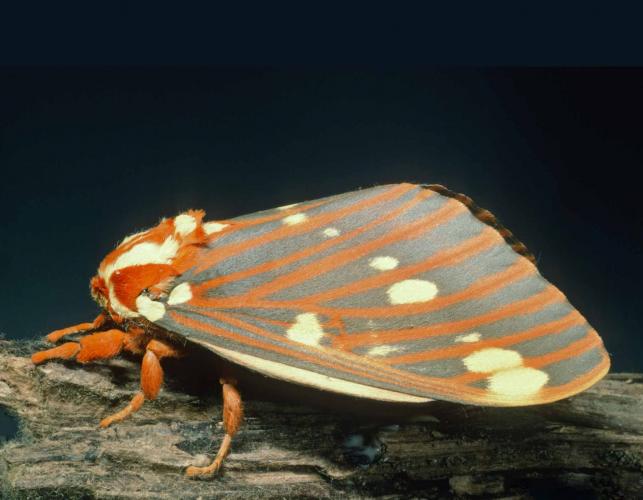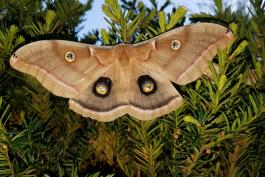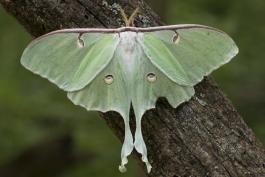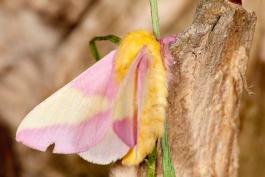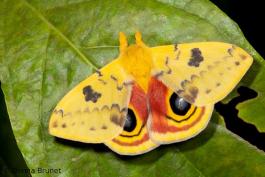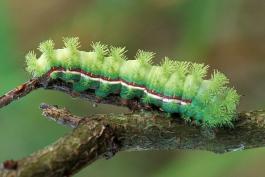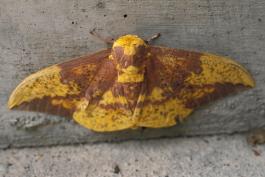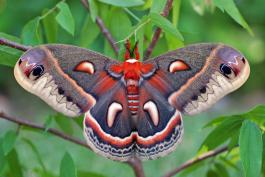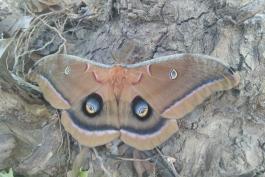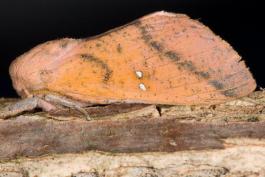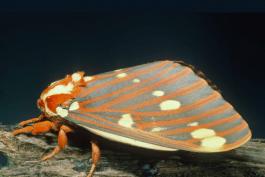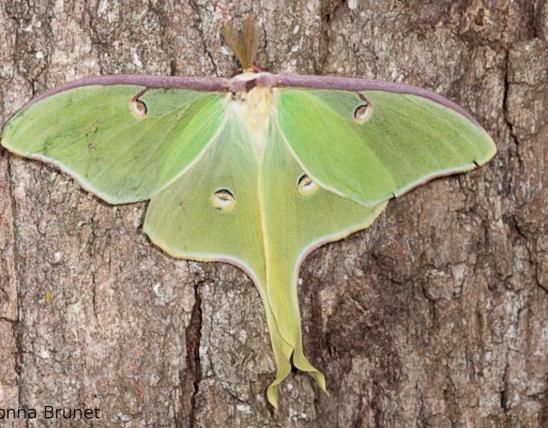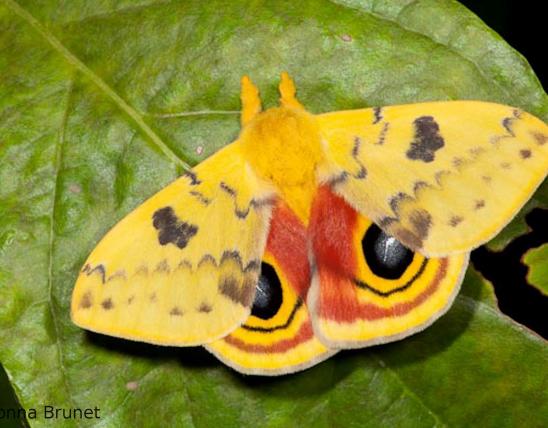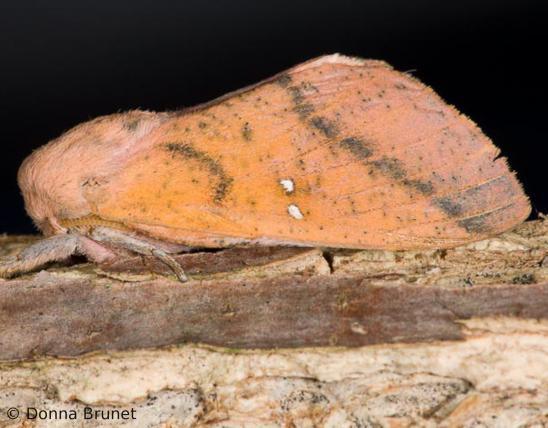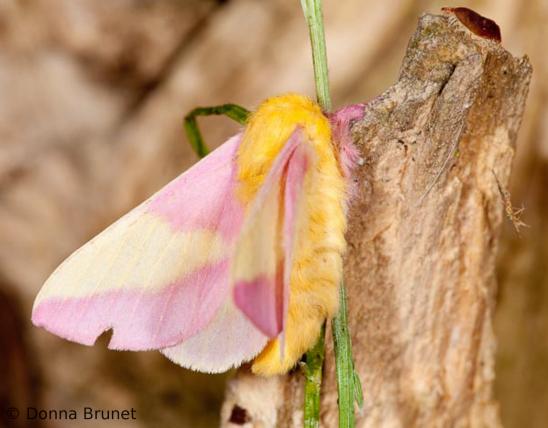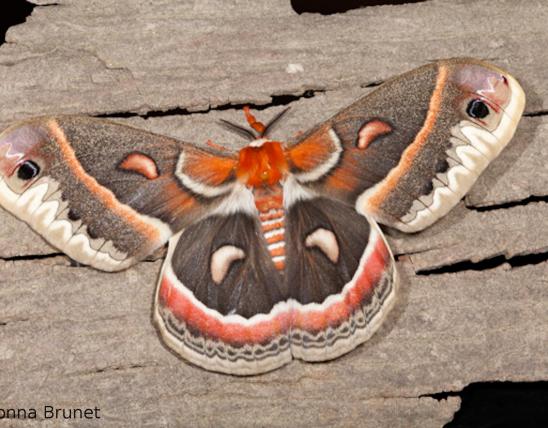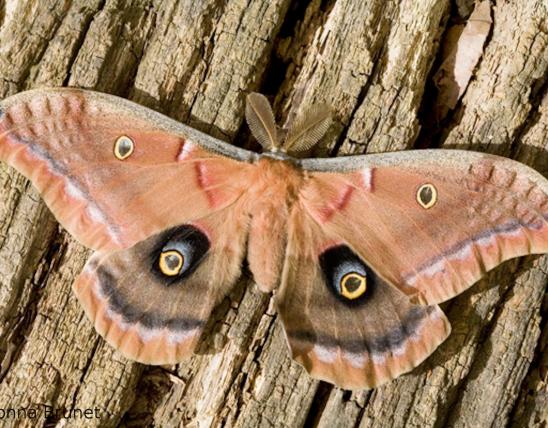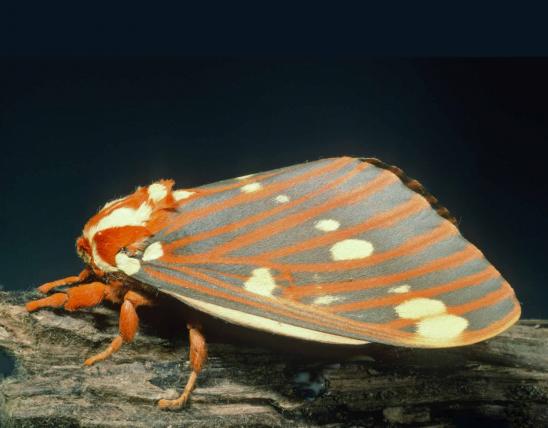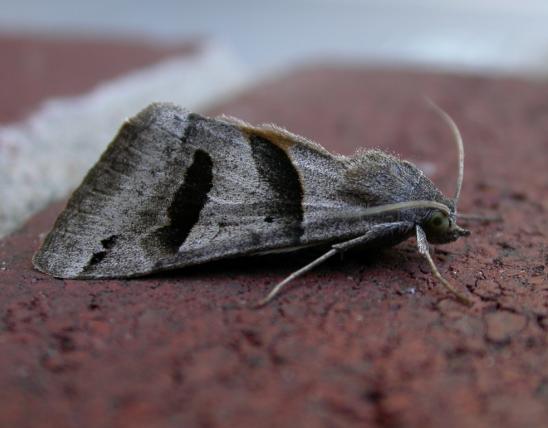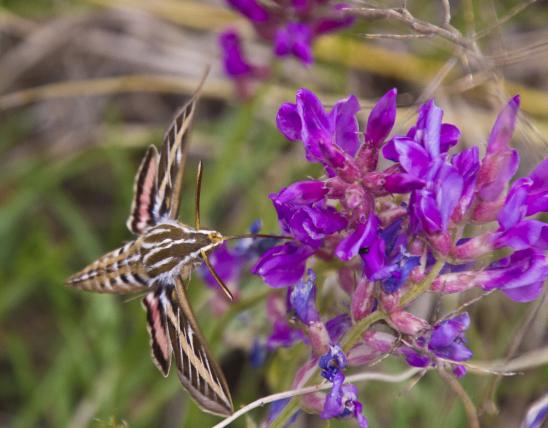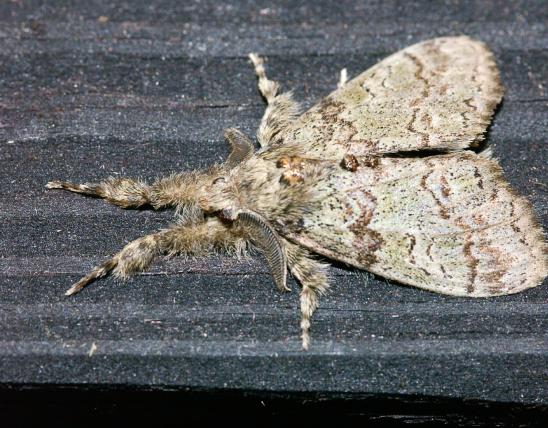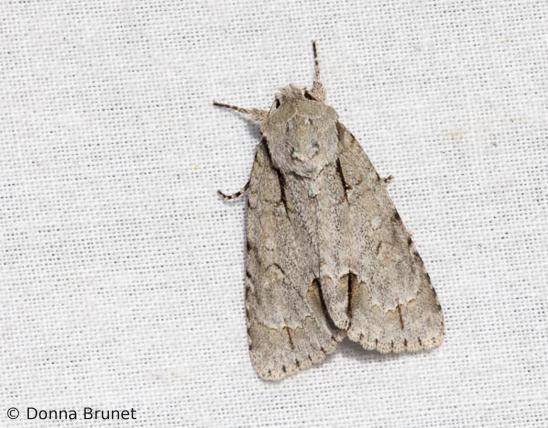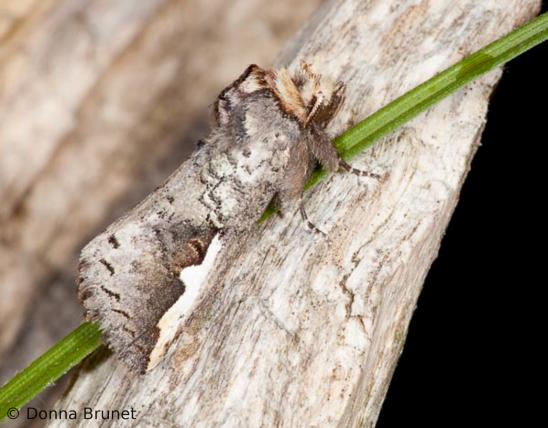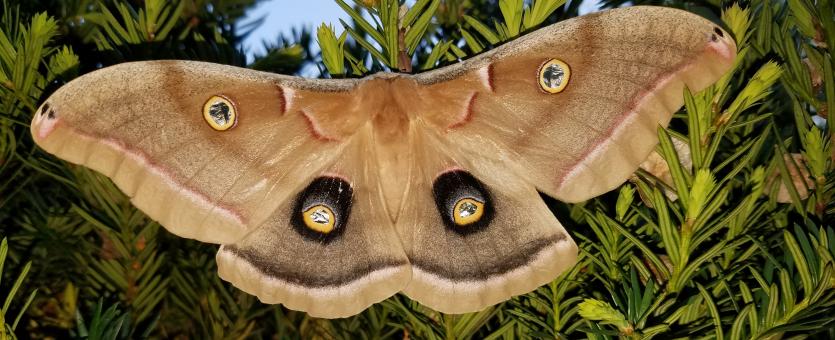
Giant silk moths, or saturniids (members of family Saturniidae), are medium to very large moths with stout, hairy bodies and feathery antennae. Female antennae are either a thin filament or feathery, depending on species. Adult mouthparts are small or absent, so adults live only a few weeks without feeding. Many species have bright colors, including prominent eyespots. Missouri has 16 species of saturniid moths. Many of them are spectacular, including the cecropia, luna, buck, io, imperial, polyphemus, rosy maple, spiny oakworm, and royal moths.
Larvae are generally large and cylindrical (not flattened). Many have bumps (turbercles) and/or hairs or spines. In some species in this family, the hairs can cause a sting or skin irritation.
Wingspan: 1¼–10 inches.
Statewide. Different species are associated with different food plants, thus with different habitats, thus with different regions in the state.
Habitat and Conservation
Most often found in deciduous forests and wooded areas. As with other butterflies and moths, each species has certain types of food plants its caterpillars must eat, so the adults are usually found near those food plants. For example, many species have oaks or hickories as host plants, so you can expect to see them in and around Missouri’s many oak-hickory woodlands and forests.
Some species are frequently found in urban and suburban areas, as they are commonly drawn to electric lights at night — keep an eye on the insects that come to your porch light! Also, you can hang up a white bed sheet and have a spotlight shining behind it (look for examples online) — you can attract moths (and many other insects) that way.
Most species are nocturnal or crepuscular (active at dawn and dusk), although buck moths are diurnal (active during the day).
Different species fly (are present in the adult form) at different times of the year. Among the earliest to fly in the spring are cecropia (April–June) and luna moths (April–August). About half of the species fly into August or September, with the flight season for silk moths ending in October with buck moths.
Food
The caterpillars of this family eat a wide variety of plants — typically the foliage. Many species eat the leaves of trees and shrubs such as oaks, hickories, walnuts, maples, willows, persimmon, sassafras, sweet gum, honey locust, sycamore, sumacs — but some species also eat grasses and other nonwoody plants. Io moths feed on both deciduous and coniferous trees, forbs, and grasses.
The winged adults of this family do not eat; they cannot eat, because their small mouthparts are nonfunctional. The adults therefore survive on the foods they ate as caterpillars.
Life Cycle
Some species in this family have only one brood a year, while others may have two or more. Males and females of some species look similar, while others look different. The plumelike antennae are usually larger in males than in females.
Females attract males by releasing pheromones (chemical substances whose odors attract males of the species). Males are highly sensitive to pheromones and can be drawn to a female from several miles away. Females generally release pheromones at specific times during the day or night (depending on the species) and are usually released for short periods of time (2–3 hours for most species). This period is called the “calling time.” Male activity is mostly confined to this period. (Pheromones are used by many other moths and butterflies, but its role with saturniid moths is especially well documented.)
Females lay eggs on or near the species’ larval host plant. Whether these are deposited singly or in groups depends on the species. Upon hatching, the larvae (caterpillars) eat and grow, molting (shedding their “skins”) several times until they’re ready to pupate.
Some saturniid species (such as the luna and cecropia moths) pupate inside silken cocoons, while others (such as the royal moth) work their way into the soil and pupate there. Luna moths form a cocoon in leaf litter on the ground, and cecropias form cocoons attached to a twig by silk, while polyphemus moths use silk to wrap a leaf around a cocoon that falls to the ground in autumn. All Missouri saturniid species overwinter in the pupal stage.
Because adults have nonfunctional mouthparts, they do not eat or drink once they emerge from the cocoon, so the adults don’t last very long: they usually only live about two weeks or less. You might think that a single-brooded species would only be seen during a few weeks, but that isn’t necessarily the case. The cecropia, for example, has only one brood, but because adult moths emerge at different times between April and June, you may see them throughout that period.
Human Connections
People who collect butterflies and moths consider these breathtakingly beautiful moths some of their prized specimens. Indeed, anyone who sees one of the large, colorful members of this group can’t help but be impressed.
The large caterpillars in this group can be spectacular as well. An example is the hickory horned devil, which is the larva of the royal walnut moth — it has two names, one for the enormous caterpillar and one for the adult moth.
The family name, Saturniidae, is from the genus name Saturnia. That name references the Roman goddess Juno (Hera was her Greek name); the wife of Jupiter (Zeus), she was the queen of the gods. Because she was the daughter of the god Saturn (Cronus), she was also called Saturnia.
The scientist who first described the genus Saturnia (and bestowed the name) was the German botanist and entomologist Franz Paula von Schrank. In the early 1800s when he worked, higher education in western universities always included plenty of Latin and Greek history, language, and culture. Schrank, by the way, was also a Roman Catholic priest.
Because several types of caterpillars have hairs or spines that are skin-irritating, we do not recommend handling any hairy or spiny caterpillars unless you’re certain they’re safe.
Ecosystem Connections
The caterpillars of some saturniid moths are infamous tree pests. The rosy maple moth, for example, periodically has outbreaks that can sometimes completely defoliate soft maple trees. Generally, and over the long term, these caterpillars do not cause serious harm to their tree hosts.
Moths, in all stages of life, are food for many kinds of predators. The forewings of many saturniids provide them camouflage against the leaves and trunks they commonly perch on. The hindwings of several (such as the polyphemus and io) have large, conspicuous eyespots, which the moth, when disturbed, will reveal by sliding its forewings sideways. The sudden, startling sight of owl-like eyes may make a predator hesitate long enough for the moth to fly away to safety.
The stinging or irritating hairs or spines on the caterpillars of many species is a reminder that these large, juicy larvae would otherwise be choice morsels for many kinds of predators. Doubtless many predators — owls, perhaps, and snakes — are unfazed by the noxious hairs and spines.
There are several other defense mechanisms among members of this family. The caterpillars of some make clicking noises and vomit to deter predators. The tails on the hindwings of luna moths apparently disrupt the sonar that hunting bats use to locate the moths.
Populations of our native saturniid moths are shrinking as an unanticipated result of fly and wasp parasites intentionally introduced to North America to prey on nonnative, invasive spongy moths. People concerned with the devastation caused by spongy moth caterpillars identified insect parasitoids from the spongy moth’s native lands and introduced them to America. Unfortunately, those parasitoids also attack several of our native saturniids, including cecropia, luna, and promethea moths, reducing their populations in New England and elsewhere. Meanwhile, those parasitoids have not ended the threat of the spongy moth. The harmful effects on nontarget species are critical issues in combating invasive plants and animals.
